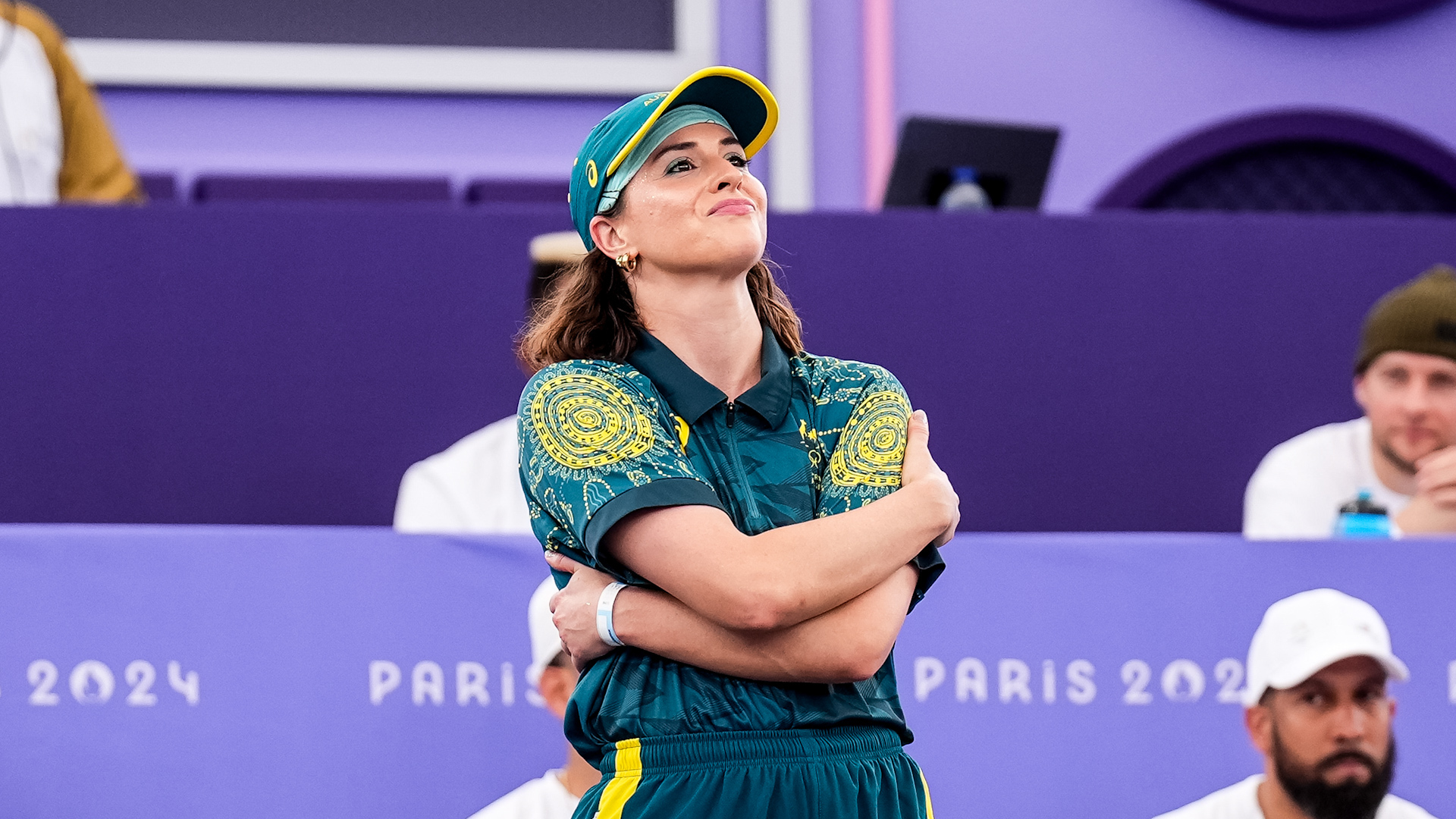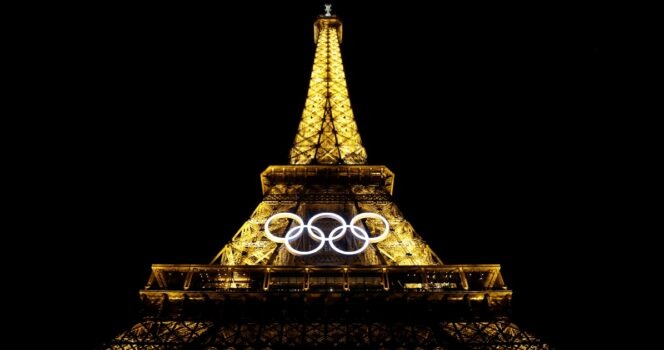The 2024 Paris Olympic Games introduced breaking as an official sport for the first time, bringing global attention to a unique and vibrant dance form. Among the competitors, Australian breakdancer Dr. Rachael Gunn, also known as “Raygun,” quickly became a widely discussed figure. Her distinctive performance style and unconventional approach to the sport stirred both admiration and debate across social media and sports circles.
A Memorable Performance on the Olympic Stage
Dr. Rachael Gunn, 36, represented Australia in the women’s breaking category. Despite facing tough competition, her performance was notable for its originality and artistic expression. She participated in three round-robin battles, going up against athletes from the USA, France, and Lithuania, but unfortunately did not score any points in those matches.
While her performance did not earn high scores from the judges, it gained significant attention online. Some viewers found her approach refreshing and saw it as a bold artistic statement, while others were more critical, questioning her style and its place in an Olympic setting.

Public Reactions and Social Media Buzz
Following her performance, discussions erupted on social media, with users sharing a wide range of opinions. Some expressed confusion over her unconventional breaking style, while others admired her commitment to originality. One post on X (formerly Twitter) humorously speculated: “If this Raygun lady turns out to be a comedian who somehow made it to the Olympics as a joke, it will be one of the greatest moments ever.”
Despite some negative feedback, there was also strong support for Dr. Gunn’s approach. Many acknowledged that breaking is an art form, and her performance was an attempt to challenge the traditional expectations of the sport.
Addressing the Criticism
Dr. Gunn responded to the feedback with confidence, addressing the scrutiny surrounding her routine. She pointed out the differences in how male and female breakdancers are judged, writing: “Looking forward to the same level of scrutiny on what the b-boys wear tomorrow.”
Her comments highlighted ongoing conversations in the breaking community about artistic freedom and gender dynamics within the sport. While her style may not have aligned with traditional competitive breaking moves, she remained steadfast in her belief that originality and creativity should be celebrated.

Breaking and Its Cultural Significance
Breaking, often referred to as b-boying or b-girling, originated in the 1970s as part of hip-hop culture. It combines athleticism, rhythm, and personal expression, making it distinct from other dance forms.
Dr. Gunn secured her spot in the Olympics after winning the Oceania Breaking Championships in 2023, proving her technical skill and dedication to the sport. In breaking, originality plays a key role, and Dr. Gunn took this philosophy to heart, choosing to prioritize creativity over conventional moves.
Her Approach: Emphasizing Art Over Competition
In a post shared by Australia’s breaking team, Dr. Gunn encouraged aspiring dancers to embrace their individuality. She stated: “Don’t be afraid to be different. Go out there and represent yourself; you never know where that’s gonna take you.”
Elaborating on her Olympic performance, she explained: “All my moves are original. I was never going to beat these athletes on power moves alone, so I wanted to showcase something different—artistic and creative movement. How often do you get a chance to do that on an international stage?”
Her commitment to pushing boundaries within the sport was evident, even though it sparked mixed reactions from audiences and judges alike.

Academic Background and Its Role in Her Performance
Beyond her skills as a breakdancer, Dr. Gunn has an extensive academic background. She holds a PhD in Cultural Studies and a BA in Contemporary Music from Macquarie University. Her research focuses on the cultural politics of breaking, blending dance studies, media analysis, and ethnography.
While some admired her academic contributions to the sport, others speculated that her Olympic performance was intended more as a statement than a competitive effort. Some critics claimed that her participation could overshadow other Australian athletes who trained rigorously for the Games.
One commentator remarked on X: “Many athletes dedicate their lives to their sport. Was this performance meant for research rather than competition?”
Despite the skepticism, Dr. Gunn remained unapologetic about her approach, emphasizing that she was proud to represent Australia on the global stage.
Celebrating Individuality and Artistic Expression
Rachael Gunn’s performance not only sparked debate but also highlighted the importance of personal expression in breaking. The sport has deep roots in creativity and individuality, and her routine was a testament to those values.
Even with mixed reactions, she expressed gratitude for the opportunity to wear the Australian uniform, particularly the version featuring Indigenous prints, stating: “It was a real moment of pride for me.”

A Legacy of Creativity in Breaking
Despite breaking’s rich history, its inclusion in the Olympics marked a significant shift for the sport. The competition saw a blend of technical mastery and creative movement, reflecting the diverse styles within the global breaking community.
Dr. Gunn’s performance may have been unconventional, but it demonstrated that breaking is about more than just athleticism—it is also an evolving art form. Her style, which some viewers dubbed “the kangaroo” due to its unique movements, will likely be remembered as one of the most talked-about moments of the event.
Looking Ahead: The Future of Breaking in the Olympics
The 2024 Paris Olympics was the first and, for now, the last Games to feature breaking as an official event. According to SBS Australia, breaking will not be included in the 2028 Los Angeles Olympics. While the reasons behind this decision are complex, it underscores the challenges of integrating artistic sports into a highly structured competitive format.
The exclusion of breaking from the next Olympics raises questions about its future on the international stage. However, the sport continues to thrive in global competitions, and its presence at the 2024 Games has brought new visibility and recognition.
Final Thoughts
Dr. Rachael Gunn’s Olympic journey was anything but conventional. While her performance may not have followed traditional competitive expectations, it showcased the depth and diversity of breaking as an art form.
As debates continue about the role of creativity in competitive sports, her story serves as a reminder that innovation and authenticity are essential elements of artistic expression. Whether you view her performance as a bold statement or an unconventional approach to breaking, one thing is certain—she made an impact on the Olympic stage and sparked conversations that will resonate for years to come.
What do you think about Dr. Gunn’s unique approach? Join the discussion and share your thoughts!

